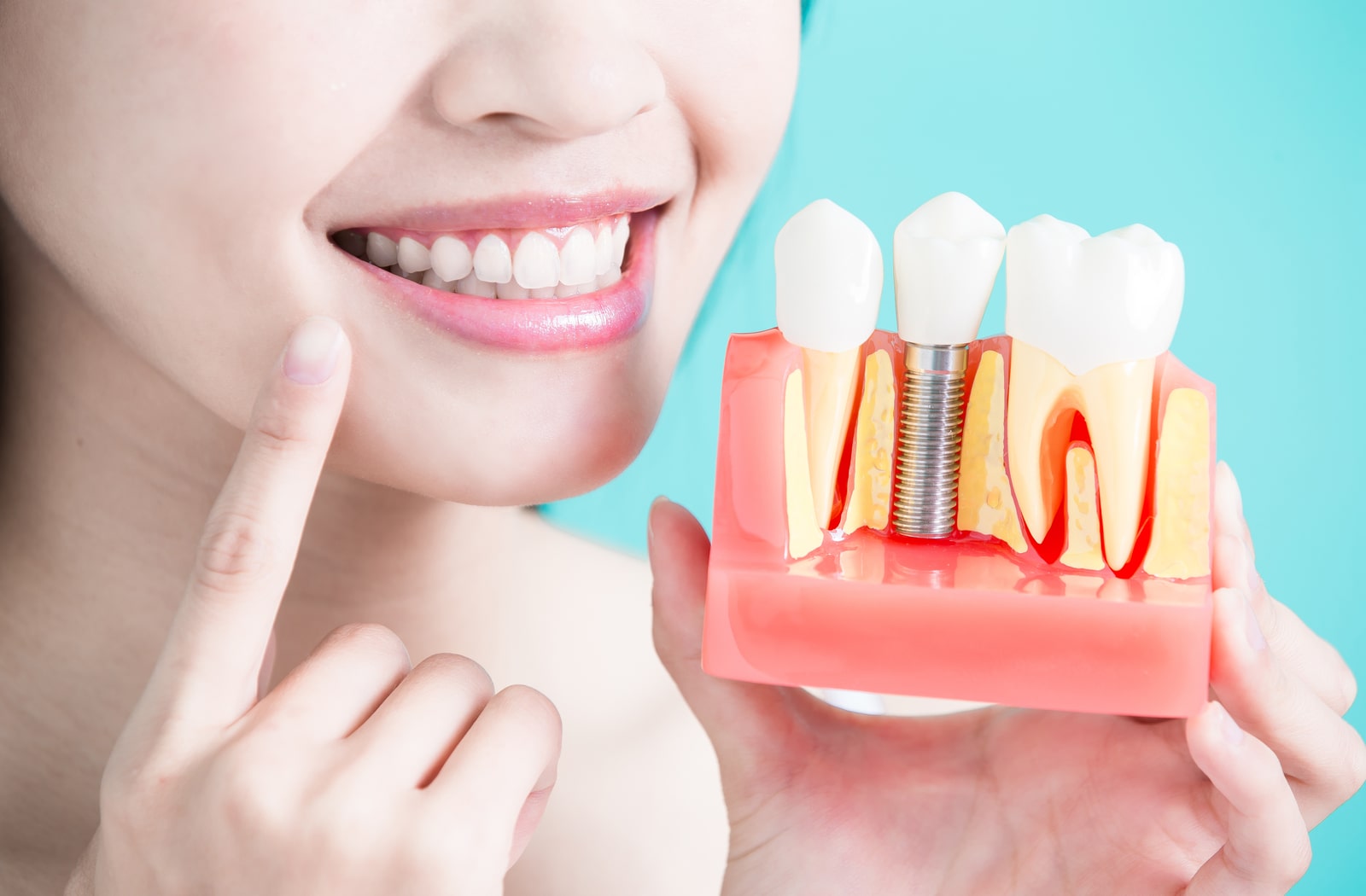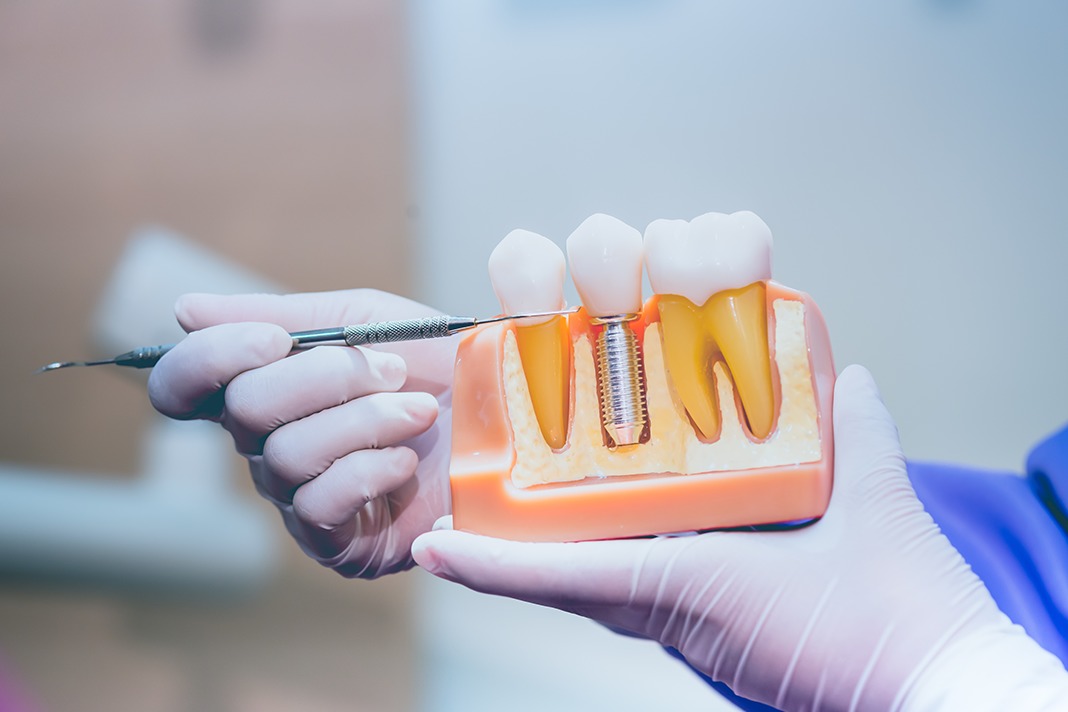Who Individuals struggling with missing teeth, damaged, or poorly shaped teeth, may have or had periodontitis. Thankfully, it is a preventable and treatable.
Periodontitis (per-e-o-don-TIE-tis) is another word for gum disease. If you dentist uses this tern when talking to you, he or she is referring to a serious gum infection that injures a person’s soft tissue that supports their teeth. It is important to not prolong treatment as it may destroy the bone that your teeth rely on for support. Also, it is important to know that your periodontal disease must be treated before you can get implants.
Periodontitis can also cause teeth to loosen or even lead to tooth loss. Periodontitis is common but largely preventable. Unlike many other diseases, periodontal disease does not cause any pain. Meaning, it is a silent disease in which the tooth’s gum becomes inflamed and may be bleeding before detected. Pain may occur but is an unusual feature; if present, it is typically associated with an acute infection. For most people, regular dental visits help prevent and detect pending issues early on.
In the medical world it is called a multifactorial chronic inflammatory disease that often leads to irreversible periodontal destruction if not addressed in time. A reconstructive dental specialist has an important role in periodontal inflammation, regeneration, and reconstruction. Often a loose dental implant can be resolved without the extensive work of the initial implant surgery.
The comparison between gum tissue in patients diagnosed with periodontitis or gingivitis, compared with healthy individuals commonly points to a lack of proper flossing, brushing and/or dental cleanings and smoking. While dental implants can be the ideal option to a patient’s smile and tooth function, it’s important to train the patient on improved oral care to sustain positive results.
Periodontal Maintenance
After tooth implants, patients are responsible for good home care to prevent the disease from developing again. Often patients can improve their brushing and flossing techniques. Or add these routines after meals and not just before bed. Some water-powered toothbrushes can reduce plaque that flossing, and brushing missed.
Other factors might also contribute to the development of the disease. This may mean a lifestyle change that includes:
– Stop smoking – additions are tough to beat, but the effort is vital.
– A healthier diet – especially reducing sugars and eating before bed.
– Being more faithful to get regular professional teeth cleanings.
– Avoid developing alcohol habits.
A lack of any of the above three things can increase the risk of periodontal disease initially occurring or recurring. A patient should see their periodontist at least twice a more and more if senior or a pending health condition.
The J Periodontal Implant Sci. issued a statement June 2022 in an article titled “Long-term outcomes after peri-implantitis treatment and their influencing factors: a retrospective study”.
It states, “The long-term results of peri-implantitis treatment can be improved by full compliance on the part of patients, whereas it is impaired by smoking, placement of multiple implants, and severe bone loss at baseline. Encouraging patients to stop smoking and to receive supportive care is recommended before treatment.”
NIH addresses the prevalence of peri-implant diseases since finding that 90% of peri-implant tissues had some form of inflammatory response and a prevalence of peri-implantitis from 28% to 51%.
It states, “The risk factors that generate these peri-implant diseases should be considered, with an increased prevalence in the case of tobacco use or patients with a history of periodontal disease, inadequate maintenance attendance, and oral hygiene being indicators of peri-implantitis.”
Once a patient has stopped smoking or excessive alcohol consumption, dental implants can then do a better job of safeguarding a patient’s normal tooth tissue. As well, implants avoid the need to file down contiguous teeth for traditional bridgework. They also safeguard bone and diminish bone resorption and weakening that may otherwise be the outcome due to a deficiency of jawbone height.
What Treatment Does a Person with Peri-Implantitis Need?
For a background, peri-implantitis is a site-specific infectious disease that generates soft tissue inflammation, and bone loss around an osseointegrated implant in function. The term peri-implant disease refers to the pathological inflammatory changes that occur in the tissue surrounding a load-bearing tooth implant. Two entities are described within the concept of peri-implant disease: peri-implant mucositis and peri-implantitis. Peri-implant mucositis refers to a reversible inflammatory reaction in the soft tissues surrounding an implant.
Peri-implantitis is different from mucositis in that it is an inflammatory reaction with decreasing supporting bone in the tissues surrounding your implant. Patients suffering from localized peri-implant issues who lack other infections may be candidates for treatment of a local application of antibiotics. A sustained high dose of a proper antimicrobial agent precisely into the affected site may have a positive impact following 10 days of treatment.
After a patient’s oral health has improved, the are a better candite for dental implants or an implant repair that will remain healthy.
What are the Typical Symptoms of Peri-implantitis?
Warning Signs that a person has Peri-Implantitis include:
- Pain near the dental implant area.
- Swollen lymph nodes.
- A foul taste in your mouth.
- Bleeding at the implant gum line.
- Slight wiggling or movement of your dental implant.
Oral bacterial infections are the most common reason for the failure of dental implants. Periodontal disease is one of the most often diagnosed pathologies in the oral cavity. And to think that most of the time it could have been avoided.
NIH reports that “Patients who did not attend the periodontal maintenance show more peri-implantitis (61.4% PPG versus 27.3% NPG) than those that attend every 6 months (18.2% PPG versus 28.4% NPG) and those that attend every 12 months (18.2% PPG versus 43.2% NPG)”. This clearly underscores the importance of a patient who can maintain proper periodontal maintenance as it has an influence on the peri-implantitis.
Dental patients who fully embrace maintenance therapy have a statistically significant difference in success rates over patients who do not attend to good maintenance. Without training and embracing good oral hygiene and regular dental care the incidence of developing peri-implantitis has a higher incidence in patients who do not attend maintenance.
Regenerative Dental Therapy After Receiving Dental Implants
Surgical intervention using mechanical debridement, antimicrobial treatment, tightening a loose abutment, and/or guided bone regeneration may be leveraged to salvage an early failing implant. Early detection with early dental intervention is important to control progressive bone loss around the implant site and reverse the fate of implant.
Call your dentist and act today if you face this concern. For more information, contact montgomerydentalcare.com at 651-738-1880.



